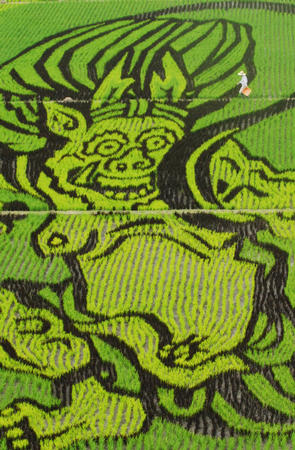 Geminoid is a remote-control doppelganger droid designed by and modeled after Hiroshi Ishiguro, professor at Osaka University and researcher at ATR Intelligent Robotics and Communication Laboratories. Robot Watch has released some short videos, which you can see at the links below. Video format is WMV.
Geminoid is a remote-control doppelganger droid designed by and modeled after Hiroshi Ishiguro, professor at Osaka University and researcher at ATR Intelligent Robotics and Communication Laboratories. Robot Watch has released some short videos, which you can see at the links below. Video format is WMV.
Video 1: Ishiguro introduces himself through Geminoid.
Video 2: This segment shows Geminoid's facial movements. The telepresent Ishiguro explains, "When someone touches Geminoid, it seems as if I am the one being touched."
Video 3: Geminoid (Ishiguro) doesn't like it when you touch his face.
Video 4: Geminoid is programmed so that his head continues to move, even when not being specifically controlled.
Video 5: Sitting next to Geminoid, Ishiguro discusses his research concerning "presence."
In Latin, gemin means "twin" or "double," while -oid is a suffix indicating a "likeness to something else." Hiroshi Ishiguro would say that his Geminoid is like a twin. The body is a copy of Ishiguro's, and the shape of Geminoid's skull was created based on MRI scans of Ishiguro's head. And Geminoid shares some of his mannerisms.
Geminoid's body, which was produced by Kokoro, makers of the Actroid line of fembots, has 46 degrees of freedom and is driven by a system of air compressors. The skin consists of soft, silicone rubber. Confined to a chair at the moment, the android is unable to stand up and move about on his own. Communication and power cables exit his rear end and snake through the shaft of the chair out of sight. It took 6 months of work to develop the body and about 2 to 3 months to develop the software.
One of the purposes for creating Geminoid is to explore the concept of tele-existence -- to figure out what is needed in order to copy an actual human's "presence" so that he or she may exist in two places at once. "I wonder how possible it is to separate one's inner self and outer self, to create distance between one's body and soul," Ishiguro says.
See more photos of Geminoid at the link below.
[Source: Robot Watch]

 In squid-crazy Hakodate, squid fishing is big business, the local specialties include shio ramen (squid-topped ramen) and ikasomen (raw squid cut into the shape of somen noodles), the summer festivals have residents busting squid-like moves in a dance called ika-odori (a squirmy version of the traditional bon dance performed at summer festivals throughout Japan), and the city fish is the squid. It is therefore unlikely that anyone was surprised when, on July 18, a group of Hakodate residents made an official announcement regarding plans to create a giant robotic squid for the city.
In squid-crazy Hakodate, squid fishing is big business, the local specialties include shio ramen (squid-topped ramen) and ikasomen (raw squid cut into the shape of somen noodles), the summer festivals have residents busting squid-like moves in a dance called ika-odori (a squirmy version of the traditional bon dance performed at summer festivals throughout Japan), and the city fish is the squid. It is therefore unlikely that anyone was surprised when, on July 18, a group of Hakodate residents made an official announcement regarding plans to create a giant robotic squid for the city.  A golden lobster has been placed on display at the Ginza Tanaka jewelry store in Nagoya.
A golden lobster has been placed on display at the Ginza Tanaka jewelry store in Nagoya.  Cantomoko is a well-traveled sex doll. She travels mostly by car in Japan, though she is known to ride a bicycle at times. She enjoys the cherry blossoms in spring, lounges on the beach in summer, frolics in fields of cosmos in autumn, and goes snowboarding in winter. She sometimes attends parties with friends. She has been to the top of Mt. Fuji. She has traveled abroad, to Saipan.
Cantomoko is a well-traveled sex doll. She travels mostly by car in Japan, though she is known to ride a bicycle at times. She enjoys the cherry blossoms in spring, lounges on the beach in summer, frolics in fields of cosmos in autumn, and goes snowboarding in winter. She sometimes attends parties with friends. She has been to the top of Mt. Fuji. She has traveled abroad, to Saipan.  A giant image of Raijin, the God of Thunder, has appeared in a rice field in the village of
A giant image of Raijin, the God of Thunder, has appeared in a rice field in the village of 


 Researchers have developed the next best thing for would-be
Researchers have developed the next best thing for would-be 
 On June 21, researchers at Waseda University's Institute of Egyptology unveiled the computer-generated facial image of an ancient Egyptian military commander that lived about 3,800 years ago. The image is based on CAT scans taken of a mummy.
On June 21, researchers at Waseda University's Institute of Egyptology unveiled the computer-generated facial image of an ancient Egyptian military commander that lived about 3,800 years ago. The image is based on CAT scans taken of a mummy.